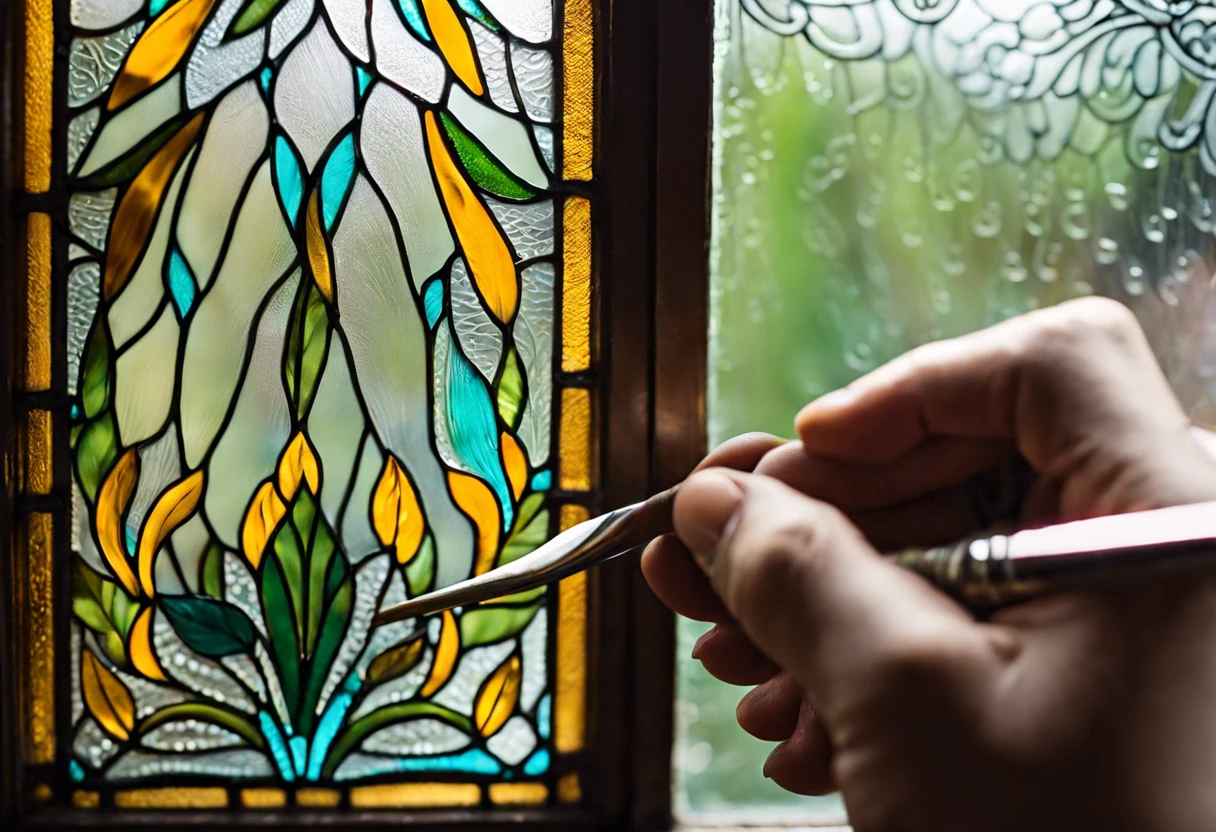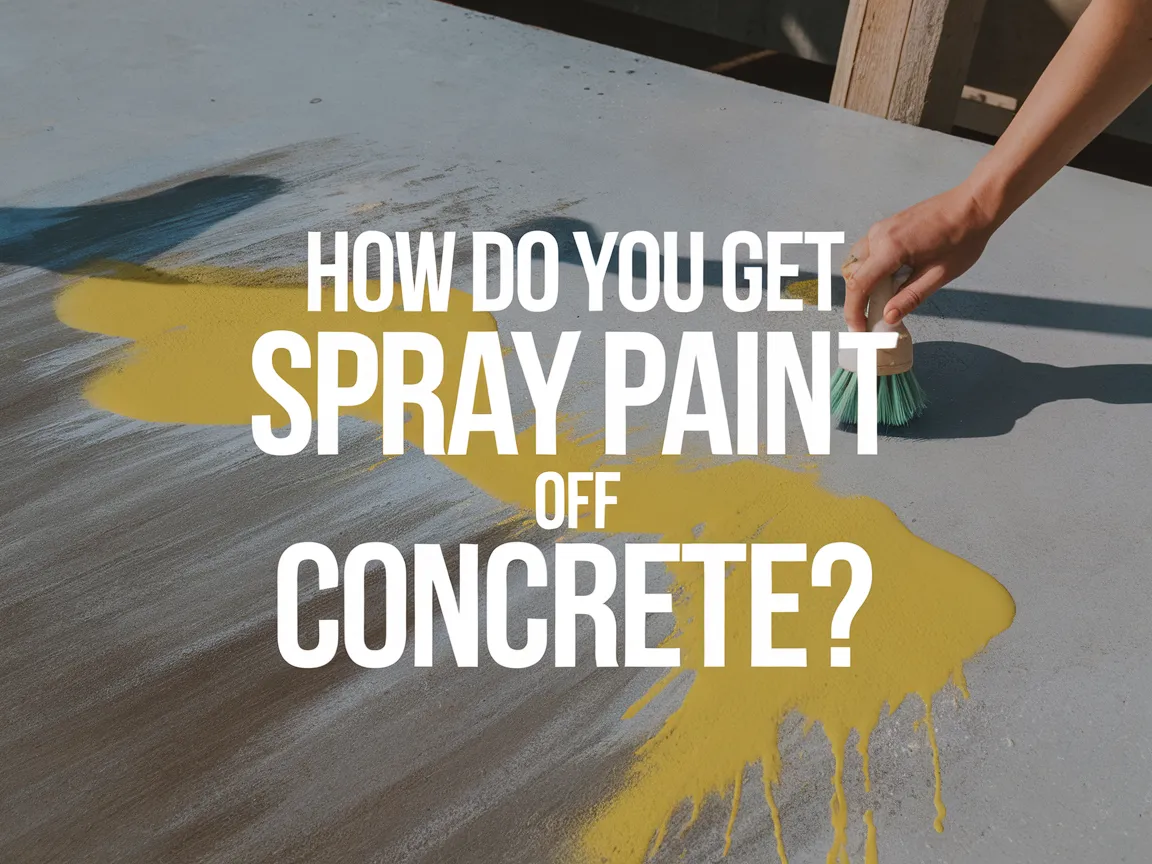What Paint to Use on Glass Windows?
Published on: March 15, 2025 | Last Updated: January 7, 2025
Written By: Alisha Winters
Glass windows are like clear squares that let light into your home and let you see the outside world. They make your house feel bright and cozy.
When you’re wondering what paint to use on glass windows, it’s super important to do it right. Trust me, I’ve made mistakes that made my projects look messy before I learned the right tricks.
In this guide, you’ll learn about choosing the right paint types, preparing your glass, step-by-step painting tips, inspiring color ideas, common issues, and finishing touches. We’ll also touch on how to paint glass windows for privacy and explore fun DIY project ideas!
Contents
- 1 What Paint to Use on Glass Windows?
- 2 What Are Glass Windows?
- 3 Before You Start Painting Glass Windows
- 4 Steps to Paint Glass Windows
- 5 Recommended Color Palette for Painting Glass Windows
- 6 Types Of Paint for Glass Windows
- 7 Factors Affecting Your Choice Of Paint for Glass Windows
- 8 Common Issues When Choosing Paint for Glass Windows
- 9 Finishing Touches After Painting Glass Windows
- 10 Creative Techniques for Painting Glass Windows
- 11 How to Maintain Your Painted Glass Windows
- 12 Best Practices for Paint Application
- 13 Frequently Asked Questions (FAQs)
- 14 Conclusion
- 15 Useful Resources
What Paint to Use on Glass Windows?
For glass windows, use acrylic or latex paint. These types are ideal for temporary designs. If you’ll be painting for the holidays, consider window-specific paint or spray paint. Always check that the paint is non-toxic and easy to remove. When working with different paint types, it’s crucial to understand how solvents affect paint surfaces.
What Are Glass Windows?
Glass windows are transparent or translucent openings made of glass. They typically come in thicknesses ranging from 3 mm (1/8 Inch) to 12 mm (1/2 Inch), which helps control sound, light, and temperature effectively.
Using paint is crucial for achieving different aesthetics with glass windows. I’ve tried various specialty paints made for glass surfaces to create a new visual vibe.
I used paint for seasonal decorations and to make cozy spots in my home. When painting glass windows, you can choose between paints for temporary designs or more permanent ones—ideal for lovely holiday themes. The magic happens when different techniques reveal the perfect aesthetic. If you’re wondering about enhancing your interior spaces, paint techniques and materials can transform your home’s entire atmosphere.
Before You Start Painting Glass Windows
What do you need to prepare for painting?
- Glass Cleaner: Use a cleaner like Windex Multi-Surface. It’s essential for prepping glass surfaces before applying paint.
- Painter’s Tape: Use high-quality tape, such as Frogtape. It prevents paint bleed, ensuring sharp, clean edges on your designs.
- Specialty Glass Paint: Choose paints like Plaid FolkArt Enamels. These are specifically designed for glass, offering excellent adhesion and durability.
- Paint Brushes: Use nylon-bristle brushes, like those from Behr. They allow for precise application in small areas.
- Sealant: A clear acrylic sealant, such as Krylon UV-Resistant Clear, protects your painted window art from the elements.
You should now have a good understanding of preparing to paint glass windows, tools needed, and safety precautions. In the next part, we’ll discuss the steps to paint glass windows.
Also See: Can You Paint Aluminum Gutters? Yes, Here’s How!

Steps to Paint Glass Windows
Now, we’ll cover steps to choose the perfect paint for your glass windows.
-
Prepare the Glass Surface
Start by cleaning the glass with soap and water to remove dirt and smudges. A lint-free cloth helps eliminate residue that affects paint adhesion.
If you’re working with a very dirty surface, consider using vinegar, which evaporates quickly and leaves no streaks. This step is crucial for better paint adhesion, allowing it to last up to 5 years outdoors.
-
Choose the Right Type Of Paint
Select paint specifically made for glass. Acrylic paint is popular for DIY projects, while specialized glass paints are chemical-resistant and can withstand the elements.
If you plan temporary designs, watercolor paint washes off easily. For long-lasting results, use paint with UV protection—ideal for exterior glass exposed to sunlight.
-
Mask Off Areas
Use painter’s tape to protect surfaces you don’t want to paint, such as adjacent frames or parts of the glass that should remain clear.
When I painted a glass window for privacy, I took my time on taping, which helped create cleaner lines and avoided paint bleed. The better your masking, the less cleanup you’ll have afterward!
-
Apply the Paint
Begin painting from the top and work your way down to avoid drips. Apply thin, even layers, allowing 2-3 hours of drying time between each layer.
You’ll get the best finish by using a brush specifically designed for smooth surfaces. Generally, two coats work best for achieving a solid color without streaks on your glass windows.
-
Seal the Painted Glass
Once the paint has dried completely, use a clear sealant for extra protection if the paint isn’t already self-sealing. This is especially important for painted glass exposed to the elements.
To extend the life of your artwork, a UV-resistant sealant helps prevent fading. Always follow the manufacturer’s instructions for drying times to ensure the best results.
You should now have a good understanding of preparing, painting, and finishing glass windows. In the next part, we’ll discuss color options.
Recommended Color Palette for Painting Glass Windows
Your best bet is a “Cool Serenity” palette because it creates a tranquil vibe while highlighting the beauty of light. This harmonious selection makes everything feel cohesive and inviting!
| Color Box | Hex Code | Color Name |
|---|---|---|
| #A4D3E2 | Light Blue | |
| #3B8D99 | Teal | |
| #F5CBA0 | Peach | |
| #F2F3F4 | Light Gray |
That covers the suggested color schemes for painting glass windows. Let’s now take a look at the different types of paint.
Types Of Paint for Glass Windows
Let’s explore different types of paint for glass windows: Acrylic Paint, Enamel Paint, Frosted Glass Spray, and Tempera Paint.
-
Acrylic Paint
Acrylic paint is water-based and ideal for interior glass. It dries quickly: 20-30 minutes for touch-dry and 4-6 hours for hard dry.
-
Enamel Paint
Enamel paint provides a hard finish, perfect for outdoor items. It’s weather-resistant, takes about 1-8 hours to dry, and makes glass easy to clean.
-
Frosted Glass Spray
This spray creates a translucent effect, offering privacy while allowing light in. Use one coat 6-12 inches (15-30 Cm) from the surface for best results.
-
Tempera Paint
Tempera paint washes off easily, making it great for short-term projects. It comes off with soap and water, so it’s perfect for holiday decorations or temporary art.
I’ve found that Acrylic paint is my go-to for long-term decoration. Its quick drying time and vibrant colors win me over every time!
We covered types of paint for glass windows here. We will now cover factors impacting your paint selection for glass windows.

Factors Affecting Your Choice Of Paint for Glass Windows
What factors should you consider when choosing paint for glass surfaces?
-
Type of Paint: Choose water-based or acrylic paint specifically designed for glass for durability and ease of removal.
-
Desired Finish: Decide between a matte or glossy finish; each affects how light reflects off the glass.
-
Environmental Conditions: Consider indoor vs. outdoor use; harsh weather requires more resilient paints.
-
Application Method: Spray, brush, or stencil? The method affects paint thickness and final appearance, especially for decorations.
Common Issues When Choosing Paint for Glass Windows
My friend struggled with painting glass windows for privacy. She didn’t realize that regular paints wouldn’t stick, and they peeled quickly.
To resolve this, I recommended glass paint, which bonds well. Using an adhesive primer first ensures it stays in place. A kiln-fired method lasts indefinitely!
Finishing Touches After Painting Glass Windows
After selecting your paint, let the windows cure for at least 24 hours. This ensures durability and improves adhesion for a longer-lasting finish.
Inspect every inch for bubbles or missed spots. A magnifying glass helps spot 2 mm blemishes. Use products like Behr’s Premium Line for quick retouching.
I’d recommend applying a second topcoat and considering UV protection for longevity. Choose paints with UV resistance of at least 30 for optimal results.
Creative Techniques for Painting Glass Windows
Want to achieve a stunning look for your painted glass windows? Here are some techniques that can elevate your project!
-
Stained Glass Effect
Use transparent glass paint to create vibrant designs. Mix colors for depth. You’ll get a classic stained glass vibe—perfect for adding charm to any room.
-
Frosted Look
Apply frosted glass spray for privacy while letting light shine through. This technique’s great for bathroom or bedroom windows where you want to filter light.
-
Seasonal Themes
Swap out designs based on holidays! Use washable paint that you can easily remove later. Think pumpkins for Halloween or snowflakes for winter!
-
Texture Techniques
Try sponges or brushes to create unique textures. With a bit of creativity, you can simulate waves or clouds—giving your windows a gorgeous artistic touch!
How to Maintain Your Painted Glass Windows
After painting, upkeep is key for long-lasting beauty. Here are some maintenance tips:
| Maintenance Tip | Recommended Action | Frequency |
|---|---|---|
| Gentle Cleaning | Use a soft cloth and mild soap to clean. Avoid abrasive cleaners. | Weekly |
| Inspect for Peeling | Check for any areas where paint may start to peel or fade. | Monthly |
| Reapply Sealant | Consider a new layer of clear sealant on exterior windows. | Annually |
| Touch-Up Painting | Fix small scratches or chips promptly to maintain appearance. | As Needed |
Best Practices for Paint Application
Follow these practices for the best result when painting glass windows:
| Practice | Details | Benefit |
|---|---|---|
| Thin Layers | Apply thin coats of paint, allowing 2-3 hours to dry in between. | Prevents drips and ensures even coverage. |
| Consistent Temperature | Work in a temperature-controlled environment (around 20°C – 68°F). | Aids in proper drying and paint adhesion. |
| Lighting | Ensure good lighting while working. | Makes it easier to see imperfections that need correction. |
| Regular Clean-Up | Wipe off excess paint promptly with a damp cloth. | Helps maintain clean edges and reduces mess. |
Frequently Asked Questions (FAQs)
What Type Of Paint Works Best on Glass Windows?
When it comes to painting glass windows, specially formulated glass paint is your best bet. Glass paints are designed to adhere to smooth surfaces and provide vibrant, lasting colors. They often contain acrylic resins, making them durable and water-resistant.
Can I Use Regular Wall Paint on Glass Windows?
No, you can’t use regular wall paint on glass windows. Wall paint lacks the adhesive qualities required for smooth surfaces like glass, and it may peel or chip within a short time. Instead, opt for paint specifically made for glass surfaces for better results. If you’re looking to achieve a professional finish, choosing the right primer matters.
How Long Does Glass Paint Take to Dry?
Glass paint typically takes about 24 hours to dry completely. Factors such as humidity and temperature can affect drying times, though some products may dry in as little as 1-2 hours. Always check the manufacturer’s recommendations for the best results. If you encounter unexpected paint issues or need specific removal techniques, you might want to explore brake fluid paint removal methods.
Is It Necessary to Seal Painted Glass Windows?
Yes, sealing painted glass windows is recommended to protect your artwork. A clear sealant enhances durability and protects against moisture. Without a seal, your artwork could fade or wash away quickly when exposed to the elements. If you’re working with single-stage paint, you might want to explore ceramic coating techniques for protection.
Can I Remove Paint From Glass Windows Easily?
Yes, it’s generally easy to remove paint from glass windows. Common methods include using a razor blade or specific paint strippers made for glass surfaces. Just be careful to avoid scratching the glass while you work. If you’re planning a home exterior project, you might want to explore choosing the right foundation paint color.
How Do I Prepare Glass Windows for Painting?
Preparing glass windows for painting involves cleaning them thoroughly. Use soap and water or good glass cleaner. Ensure the surface is free from dust and grease, which can affect adhesion and lead to peeling paint later. If you’re looking to touch up your paint job precisely, you might want to explore dealership touch-up paint options.
What Safety Precautions Should I Take When Painting Glass Windows?
When painting glass windows, it’s vital to wear protective gear such as gloves and eyewear. Some glass paints contain fumes that can irritate your skin or eyes. Always work in a well-ventilated area for your safety. If you’re unsure about the right canvas size for your painting project, check out optimal canvas dimensions for painting.
Conclusion
We covered a lot: what paint to use on glass windows, various types of paint, recommended color palettes, essential steps to take, and common issues that might arise. We also talked about DIY project ideas and finishing touches, plus factors influencing your paint selection.
For painting glass windows, be sure to select paint specifically formulated for glass. Enjoy your painting journey with the colors and techniques that suit your needs, whether it’s for privacy or festive touches!
To explore more insights and resources, visit our homepage: Paint Answers.
Useful Resources
- Betti, C., & Sale, T. (2012). Drawing: A Contemporary Approach (6th ed.). Belmont, CA: Cengage Learning.
- How to (and not to) Do Window Painting – DIY Marta
- 60 Window Glass Painting Designs for Beginners – Pinterest
- Christmas Window Paintings – Holidappy
Experienced interior designer with 15+ years in transforming spaces, blending artistry with expertise in color and design. Rhode Island School of Design graduate, specializing in restorations and modern makeovers.
Glass, Material




